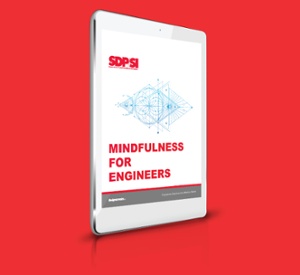What is Human Augmentation? Human augmentation (a.k.a. Human 2.0) seeks to enhance and exceed the...
Tribal Leadership for Engineers
What is “Tribal Leadership?”
After studying 24,000 people in more than two dozen organizations, three authors (David Logan, John King, and Halee Fischer-Wright) outlined some innovative, science-based leadership models. Their 2008 book, Tribal Leadership: Leveraging Natural Groups to Build a Thriving Organization, Logan et al., concluded that a company’s success depends on the strength of its “tribes.”
A strong tribal culture and effective leadership are the determinants of a thriving organization. So, what is a tribe? A tribe is a group of 20-150 people enabling a process for work to get done.
- Tribes tend to occur naturally at each level of society.
- All of us are members of tribes, ie. social circles, work groups, sports teams, and neighborhood associations.
- The more developed our tribes, the higher level of work we are doing.
Five Stages of Tribal Development
Tribal development is a concept that can explain the success or demise of every civilization. Humans need some level of tribal organization to have an impact. Take early civilizations for example: the more sophisticated the tribal knowledge became the more cities grew; tribes that were constantly at war with their neighbors died out. Now days, the old concept of tribe is all but extinct and modern tribes are worldly groups of people with similar interests or commonalities.
The authors describe five stages of tribal development, from disorganized and scandalous to globally thriving and philanthropic. When it comes to the workplace, tribal development is a measure of teamwork and success. Continue reading to find out what kind of tribe you belong to, and how to “take the reins” and take your tribe to the next level.
STAGE 1—Life sucks. The tribe is systematically severed itself from other tribes. Members can create scandals, steal from the company, or even threaten violence. About 2% of employee tribes are stage one tribes.
STAGE 2—The culture makes people dumb. 25% of tribes are dominated by employees who are passively antagonistic, sarcastic, and resistant to new management initiatives.
STAGE 3— “I’m great and you’re not.” A workplace tribe is filled with contentious knowledge hoarders who want to outwork and outthink their competitors on an individual basis. Each employee is a lone warrior. Stage three tribes comprise about 49% of all employee tribes.
STAGE 4— “We’re great!” At stage four (20% of employee tribes), common values unite members who appreciate that the group is greater than any individual member. Members are excited to work together to benefit the organization.
STAGE 5— “Life is great!” Only 2% of tribes function at the highest level, where member innovations have potential to make a global impact.
Successful Tribes Start with Leadership
Tribal maturation doesn’t occur on its own; only effective leadership and a strong culture can unlock the next level of tribal development. Effective leaders are aware of each stage of development within a group or organization, and gain the ability to nudge people to organize on a higher level. This happens when leaders connect to people while also connecting others.

Are you ready to start a journey to becoming the best version of yourself? Learn about the powerful impact mindfulness meditation has on overall well being,
And discover how it can change your life from the inside out. Download the ebook, Mindfulness for Engineers.
- Reduce anxiety
- Manage stress
- Increase focus
- Boost energy
- Enhance creativity
Hiring
Strong cultures unify people who share common values. Creating a cohesive culture begins at the top with the company’s leaders and their ability to hire for the culture they want to create. Employees who don’t fit the culture won’t last and may end up developing an unwanted subculture within the organization. Once a manager identifies applicants with similar beliefs and values, s/he needs to find ways to motivate them. One of the best ways to do that early on is through mentorship.
Maintaining
Cohesive cultures are ones where employees play fulfilling roles within the organization. A positive culture creates personal investment in the company, loyalty, and higher productivity. The following bullets are the traits for management to consider while building a healthy tribe that can reach stage five of tribal development.
- Employees should be ongoing participants in shaping culture though employee surveys, culture committees, and suggestion boxes, to name a few.
- Every team member acts and feels like s/he is contributing positively to the organization.
- Periodic qualitative and quantitative assessments help to sustain and strengthen culture as employees sense that leadership cares about this and follows through.
- Transparent goals, good talent, trust, and collaboration enable more effective problem-solving than hands-off, micromanaging leaders.
- Cohesive cultures care for employees and treat them like family, and often hang out together in less formal settings.
- Whether they are “friends” or not, they are all friendly with each other.
Finally, a cohesive culture encourages healthy, positive competition. Because humans are inclined to tribal behavior instinctively, leaders should tap into that. Consider things like competitive team-based events that are fun and interesting to employees such that they look forward to coming to work.
Prevention
Unnecessary management layers in the organizational hierarchy diminish everyone’s connection to the team goal. Minimal layers mean everyone’s time is spent working toward the team goal. Too many layers of supervision impede a person’s ability to execute on the strategy.
Management must be transparent to build trust among employees, model the corporate values, display a great passion for work, and hold ethics in high regard. They should serve as an inspiration to all employees and people who want to work there. They are hands-on leaders with an open-door policy. Managers should not force a perspective or outlook on a team, but rather, embrace the diverse ideas and backgrounds of each employee. If "groupthink" persists, efficient managers quickly intervene.
Arrangements and Policy
The best managers consider how office space caters to the style of the team. They design arrangements that enable a cohesive, comfortable environment, whether it’s furniture and spatial arrangement, technology adoption, or new company policies. In the same way as the company gives the customers what they want, policies that give the employees what they want tend to yield maximum productivity from workers while also increasing employee satisfaction and longevity.
Steps for Developing a Tribe of Engineers and Designers
So, can this concept of tribal leadership work for engineers and designers? Yes! Like any other tribe, engineering design teams can benefit from the work of Logan, et al. Before implementing this concept, the team leader/manager might consider enrolling in a certification program for tribal leadership that provides more in-depth and practical insight than might be gleaned from the book.
Get our guide to becoming a better worker, leader, and teammate. Download Mindfulness for Engineers to start your own customized practice today!
Step 1: Understanding
The first step, of course, is for the leader to understand the tribal stage of the design team. The determination shouldn’t be difficult; in most cases simple observation, questions to members, and reflection will suffice. Then, in collaboration with the team, the leader develops a group plan and individual member plans-of-action to advance the team to the next tribal stage.
Step 2: Communicating
The team needs to define its beliefs and values collaboratively. If the team has done this already, examine whether any of these need to be modified. The beliefs and values should be a social contract between members, including the leader/manager. Members could sign or initial the social contract as a public demonstration of support and agreement. The social contract is both the “behavioral model” for the team, as well as the selection criteria for membership. If you discover pockets of resistance from a member (that may manifest in sarcasm or downright belligerence), deal with it as you would any other workplace performance issue by encouraging improvement.
Statements of values/beliefs should be visible in the workspace so employees have frequent reminders. It can come in the form of daily “huddles,” emails, displays, music, images, or any form of communication. The important part of this step is to consistently place the team values in the “front and center” of everything. Management must model the beliefs and values, while holding team members accountable for them, too.
Pro Tip—As a manager, you might ask employees to journal a weekly reflection with examples of things they did that exemplified the values, as well as things that missed the mark. The time investment for this exercise is minimal, yet the benefits of it can be amazing if you engage the members in periodic one-on-one discussions about journal observations. Be sure to solicit member feedback about your ability to lead under the social contract as well.
Step 3: Managing
Greatness comes through constant improvement of culture and teamwork. And, as difficult as managing people can be at times, success comes directly from management. Leaders must empower the employees so that they each have a continual, meaningful role on the team, and monitor their progress while making “tweaks” as necessary. If management notices “groupthink” creeping in, immediate action is essential!
Team leaders can use these six strategies to overcome groupthink:
- Recruit a diverse team, rather than a team of like-minded people. People can share the same beliefs and values as the team, but be diverse in perspectives.
- Remain impartial so that members feel less pressure to agree with your point of view just for the sake of appeasement.
- Encourage debate and constructive criticism to enhance the decision-making process and overall quality of performance. Excellence does not come easily. Go so far as to assign someone to play the devil’s advocate role, where they will challenge assumptions and encourage different perspectives.
- Invite outsiders to participate in the group periodically to get another opinion.
- Finally, allow time for independent evaluation. Some people (e.g., introverts) simply don’t function at their peak during spontaneous brainstorming sessions, so provide prior notice of meetings and time for individuals to prepare.
Step 4: Nurturing Soft Skills
Get the team focused on “soft skills” development (you might include this in the team’s social contract). Colleges and companies usually avoid or truncate soft skills training for engineers. Often, this deficiency causes career stagnation because of a lack of communication, creativity, and interpersonal skills. Experts suggest six soft skills every engineering team should develop.
Teamwork Today’s engineering work requires people to work in inter-dependent teams, which demands that each team member works well with the others. Effective team leadership results in better relationships, greater collaboration, and more innovation.
Creativity Innovation requires out-of-the-box thinking. Consequently, curiosity is an essential characteristic for innovation. Curiosity fuels creativity, and that is the differentiator between those who merely learn and those who find problem-solving to be motivational. Allowing individuals the “wiggle room” to be creative might require an immense amount of flexibility from leaders, especially managers who display Type A personality traits.
Communication Those who cannot convey ideas and plans well are significantly less effective in teams. At its core, engineering involves problem-solving and risk mitigation. The ability to communicate solutions and risks to both technical and non-technical audiences is critical. Managers must be willing to do whatever it takes to help their top performers communicate effectively.
Pro Tip—Keep the lines of communication open. Try implementing a communication platform, like Slack, or a project management technique, like Agile.
Empathy for the Customer Engineers can get so caught up in a technical project that they forget how much people are affected by whatever it is that they are building. Unfortunately, engineers often fail to account for a consumer’s experience different from their own experiences as a designer. Empathy allows engineers and designers to gain a better understanding of the problems they are solving.
Adaptability Sometimes the first solution isn’t the best solution. Additional information midway through development or implementation can dictate a radical change. Failure to adapt could be detrimental, even disastrous.
Interest in Learning The rate of changing technology can be overwhelming, especially for more “fixed” personalities who are less comfortable with change. Yet, engineers and engineering firms must keep up with technology in order to remain relevant and efficient within their industries. Obsolescence can end a career or ruin a business.
Advancing a team from stage three to stage four is all about effective leadership and collaboration, creating and sustaining a strong culture that members embrace and “live out” continually. With egos in check, a dynamic, customer-focused mindset, effective leadership, and a supportive work environment, the engineering design team mantra can be, “We are great!”




